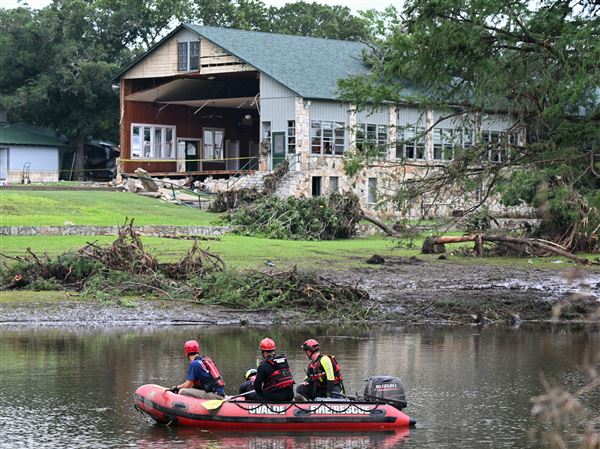JONAH FIELD — Before the Bakken and the Marcellus. Before America’s oil and gas revolution. In the days when subjects like peak oil were in vogue. Before fracking was a buzzword, trumpeted in headlines, skewered in documentaries and debated in state capitals.
Before all that, there was the Jonah.
What the public often refers to as the Jonah Field is, actually, two separate gasfields: Jonah and Pinedale.
For the past two decades these fields have helped drive Wyoming’s economy, creating thousands of jobs and contributing billions in tax revenue to Wyoming’s coffers. Less positively, drilling led to a spike in air pollution, leaving Pinedale (population 2,000) with worse air quality than Los Angeles.
The two fields were a proving ground for some of the technological advancements that turned America’s flagging oil and gas industry into a world leader. The practice of fracking one well multiple times was honed here, on the sagebrush steppe flanking the Wind River Mountains’ western slope.
In 2009, the Pinedale field was ranked third in the U.S. Energy Information Agency’s listing of the largest gas fields in the country. Jonah was the seventh.
Recent years have not been so kind. In many respects, Jonah, that combination of the two western Wyoming gasfields, has been a victim of its own success.
The improved fracking techniques helped propel development of new natural gas plays, greatly increasing the supply and driving prices lower.
Drilling in the region stagnated. Combined production in the two fields fell from about 911 million cubic feet in 2009 to 733 million cubic feet last year, according to Wyoming Oil and Gas Conservation Commission data.
State revenues from natural gas plummeted from $12 billion in 2008 to $4.5 billion in 2012, though much of that was also related to the decline in coal-bed methane production.
And then came the sales.
Encana Corp., one of the companies that helped turn Jonah into one of America’s preeminent gasfields, announced in May it was selling its stake for $1.8 billion. The company said it was turning its attention toward more profitable oil plays elsewhere in North America.
Shell followed suit several months later, selling its interest in the field to Ultra Petroleum for $925 million and increased acreage in the Marcellus shale play.
***
Today, Encana’s logo is still visible around the Jonah Field: on the decal of a spare truck, the letterhead of a staff bulletin hanging in an office building, a pair of safety gloves available to visitors.
Encana, of course, is gone now. The private equity firm TPG Capital purchased the Canadian company’s stake and created a new subsidiary to run operations: Jonah Energy.
But the lingering logos underscore one of the realities of the transition. For all that’s changed, much remains the same.
“We were able to acquire the individuals on the ground that made Jonah what it was in the first place,” said Paul Ulrich, Johan Energy’s regulatory director who worked at Encana for more than a decade before the sale. “Those people are going to continue that legacy as we grow Jonah.”
Jonah Energy bought Encana’s workplace facility -- complete with cafeteria, dorms and recreation room -- its office buildings, its 1,500 active wells and the 141,000 undeveloped acres that make up the Naturally Pressured Lance, a formation adjacent the Jonah field.
Jonah Energy’s plans, which piggyback off Encana’s designs, call for up to 3,500 wells in the NPL.
The expansion highlights one of the key differences between the two companies. Where Encana’s focus shifted to oil plays elsewhere in North America, Jonah Energy is focused solely on its Wyoming assets.
“Jonah Energy’s philosophy is one of growth,” Ulrich said. “Jonah Energy took a look at the potential of Jonah proper and realized there is still a very long life here. We are planning on continued drilling, enhanced drilling, other initiatives to grow our current base production.”
Results are already beginning to show, he said, noting the company recently added a fifth rig to its drilling fleet.
***
The story of Jonah is not uncommon, said Kyle Cooper, managing director of research at Cyprus Energy Capital Management in Houston. The Barnett shale play in Texas was one of the gasfields where advancements in drilling and completion technology helped boost production, and then watched as those improvements spread to new fields across the country.
Larger companies like Shell and Encana often have bigger overhead costs, prompting them to sell assets yielding lower returns, Cooper said.
“Many times they are sold off to people who have more strategic focus and lower operating costs,” Cooper said. “That doesn’t say anything about the field itself; it happens all the time.”
Of companies investing in natural gas today, he said, “Clearly there are a lot of people that believe they can get more out of the resource through well placement, fracking plan and other factors.”
In Jonah’s case, the fields still boasts ample reserves, existing infrastructure and proximity to markets on the Pacific coast, said University of Wyoming professor Chuck Mason.
Gasfields in the eastern U.S. still struggle with a lack of infrastructure, though they are closer to many of the markets where Wyoming sends its gas, he said.
And natural gas prices may be poised for a rebound, at least in the short term, Mason said. Despite a larger than expected injection this week, natural gas storage lags behind previous years.
The 2,801 billion cubic feet in reserve is 13 percent less than this time last year, and 14 percent below the five-year average, according to the EIA.
The shortage could be a boon for Jonah Energy, Mason said.
“They are probably looking for a good first year to get things jump-started,” he said.
***
In the early 1990s, Wyoming was an oil state. Jonah’s beginnings, coupled with the rise of the coal-bed methane industry, signaled the shift toward natural gas. In the next two decades, natural gas production increased as oil production declined.
Today, the roles are reversed. Oil production, focused in eastern Wyoming, is on the rise. Natural gas production, which peaked in 2009, is on the wane.
In the weeks following the announcement of Encana’s sale, calls flooded from state lawmakers, municipal officials and community members wondering what the transaction meant, Ulrich said.
“There’s a lot of concern about stability, consistency, how operators are interacting with the community,” he said. “How are they going to do business? Change is tough for everybody.”
As he spoke, he was driving his truck down a dirt road lined with produced water and condensate tanks. The truck reached the outskirts of the field, a place where the truck traffic slowed and the wide expanse of sagebrush unfolded undisturbed across the steppe.
This was the NPL, the place where Jonah Energy hopes to expand. Its plans depend on approval from the U.S. Bureau of Land Management.
Ulrich rattled off the company’s plans like a salesman heralding the attributes of a car. The new well pads are going to be concentrated to reduce the development’s footprint. Pipelines will be connected with processing facilities to reduce truck traffic. And then, like a good salesman, he returned to his theme.
After two decades, the Jonah isn’t going anywhere. If anything, it is getting ready to grow.
First Published: September 15, 2014, 12:00 a.m.
Updated: September 15, 2014, 12:51 p.m.















